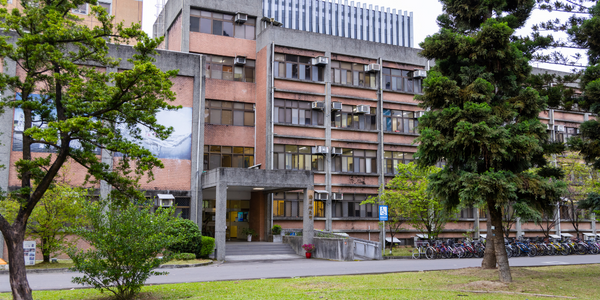Customer Company Size
Mid-size Company
Region
- Europe
Country
- Slovenia
Product
- ICONICS GENESIS64™ HMI/SCADA software
Tech Stack
- OPC Server
- Ethernet network
- CAN bus-connected expansion I/O modules
Implementation Scale
- Enterprise-wide Deployment
Impact Metrics
- Energy Saving
- Customer Satisfaction
Technology Category
- Application Infrastructure & Middleware - Data Exchange & Integration
Applicable Industries
- Buildings
- Healthcare & Hospitals
Applicable Functions
- Facility Management
Use Cases
- Building Automation & Control
- Building Energy Management
Services
- System Integration
About The Customer
Rimske Terme is a luxurious Business, Wellness and Spa Resort, located in the town of Rimske Toplice, Slovenia. The resort's thermal pools have attracted visitors for centuries, with evidence of visits during the Roman Empire. The resort is comprised of several buildings including Hotel Sofijin Dvor, Hotel Rimski Dvor and Hotel Zdraviliški Dvor. The resort, which also contains a conference center, is mostly known for its spa facilities based around the area’s historic, healing thermal baths.
The Challenge
Rimske Terme, a luxurious Business, Wellness and Spa Resort in Slovenia, embarked on a project in 2010 to update their Building Management System (BMS). The resort wanted to integrate a number of existing automated systems, including hotel room temperature regulation, room emergency/security functions, air conditioning, lighting, and diesel fuel use. They also wanted central control over their heating/cooling (heat pump) station, pumping station, thermal water pump station and electric power station operations. The hotel room automation required a BMS that could adapt to a few differences in each location. For instance, the heating/cooling in Hotel Sofijin Dvor and Hotel Zdraviliški Dvor is based on air diffusers, while in Hotel Rimski Dvor, it is accomplished via fan coils.
The Solution
Rimske Terme, working with system integrator, Robotina d.o.o., selected ICONICS GENESIS64™ HMI/SCADA software for their new Building Management System integration project. The BMS is able to help set desired parameters and then monitor and regulate them. In addition, each room’s security/ alarm (SOS) functions are also handled via the BMS. The parameters for all heating/cooling systems and subsystems are set through the BMS. The BMS provides continually updated statuses for each system, allowing the system administrator to adjust parameters for optimal regulation. Rimske Terme has connected GENESIS64 to programmable controllers through an OPC Server. Systems and subsystems are mutually connected or integrated. For example, presence sensors provide information for heat/ cooling modes and for switching lights. The complete system consists of more than 200 programmable controllers with CAN bus-connected expansion I/O modules. The controllers communicate between themselves and with the monitoring system over an Ethernet network.
Operational Impact

Case Study missing?
Start adding your own!
Register with your work email and create a new case study profile for your business.
Related Case Studies.

Case Study
Energy Saving & Power Monitoring System
Recently a university in Taiwan was experiencing dramatic power usage increases due to its growing number of campus buildings and students. Aiming to analyze their power consumption and increase their power efficiency across 52 buildings, the university wanted to build a power management system utilizing web-based hardware and software. With these goals in mind, they contacted Advantech to help them develop their system and provide them with the means to save energy in the years to come.

Case Study
Hospital Inventory Management
The hospital supply chain team is responsible for ensuring that the right medical supplies are readily available to clinicians when and where needed, and to do so in the most efficient manner possible. However, many of the systems and processes in use at the cancer center for supply chain management were not best suited to support these goals. Barcoding technology, a commonly used method for inventory management of medical supplies, is labor intensive, time consuming, does not provide real-time visibility into inventory levels and can be prone to error. Consequently, the lack of accurate and real-time visibility into inventory levels across multiple supply rooms in multiple hospital facilities creates additional inefficiency in the system causing over-ordering, hoarding, and wasted supplies. Other sources of waste and cost were also identified as candidates for improvement. Existing systems and processes did not provide adequate security for high-cost inventory within the hospital, which was another driver of cost. A lack of visibility into expiration dates for supplies resulted in supplies being wasted due to past expiry dates. Storage of supplies was also a key consideration given the location of the cancer center’s facilities in a dense urban setting, where space is always at a premium. In order to address the challenges outlined above, the hospital sought a solution that would provide real-time inventory information with high levels of accuracy, reduce the level of manual effort required and enable data driven decision making to ensure that the right supplies were readily available to clinicians in the right location at the right time.

Case Study
Intelligent Building Automation System and Energy Saving Solution
One of the most difficult problems facing the world is conserving energy in buildings. However, it is not easy to have a cost-effective solution to reduce energy usage in a building. One solution for saving energy is to implement an intelligent building automation system (BAS) which can be controlled according to its schedule. In Indonesia a large university with a five floor building and 22 classrooms wanted to save the amount of energy being used.

Case Study
Powering Smart Home Automation solutions with IoT for Energy conservation
Many industry leaders that offer Smart Energy Management products & solutions face challenges including:How to build a scalable platform that can automatically scale-up to on-board ‘n’ number of Smart home devicesData security, solution availability, and reliability are the other critical factors to deal withHow to create a robust common IoT platform that handles any kind of smart devicesHow to enable data management capabilities that would help in intelligent decision-making

Case Study
Gas Pipeline Monitoring System for Hospitals
This system integrator focuses on providing centralized gas pipeline monitoring systems for hospitals. The service they provide makes it possible for hospitals to reduce both maintenance and labor costs. Since hospitals may not have an existing network suitable for this type of system, GPRS communication provides an easy and ready-to-use solution for remote, distributed monitoring systems System Requirements - GPRS communication - Seamless connection with SCADA software - Simple, front-end control capability - Expandable I/O channels - Combine AI, DI, and DO channels







